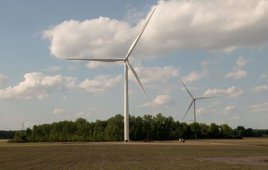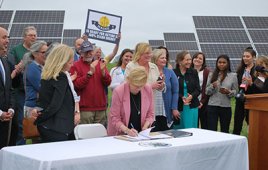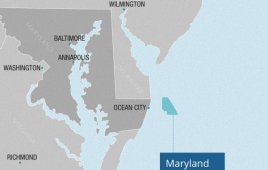Since the Fukushima nuclear plant failure was kick-started by Japan’s devastating May 11 earthquake, nuclear power generation seen intense scrutiny. In the financial markets, speculators assumed the nuclear market would take an immediate and impactful hit. Subsequently, nuclear-heavy utilities slid in the marketplace and low-carbon alternatives such as solar and wind generation immediately spiked. As a result utilities in the United States (and presumptively elsewhere) have defended their positions in nuclear energy.
The reality is that nuclear-produced electricity is no more dangerous than any other form of energy when everything is going well. And proponents of nuclear energy would be happy to tell you as much. What they may neglect however, are findings recently brought to light by the Union of Concerned Scientists. According to a recent report, after 50 years of commercial nuclear power generation the industry is still not economically viable without government subsidies. So what? This is a wind website, and I am a windpower editor. Why do I, or you for that matter, care about nuclear power and it’s feasibility?
The fact is that nuclear power has been touted as the most likely alternative or clean energy source to replace coal and gas-fired electricity generation. It’s reliable, it has no carbon footprint, it’s cheap…well, maybe not. Let’s put aside the idea that nuclear isn’t as safe as some would tell you and look purely at the economics of the situation. Nuclear has been in commercial use for over 50 years. It has been tested, altered, manufactured and tested again in an effort to make cheap, reliable electricity. Even so, it still cannot compare to carbon-based energy sources says the UCS.
If that’s the case, then how do we expect wind to stand on it’s own in the future? How do we expect wind, a variable source of energy with all it’s maintenance flaws and operational hurdles, to out-compete coal and gas? Wind power has been commercially feasible for maybe 10 years and without subsidies would be anywhere from three to five times the cost of traditional electricity generation. This new report leads me to imagine that perhaps in 40 more years, wind will still cost more than coal and gas. Perhaps we just can’t compete economically with carbon-based electricity. It’s no secret that carbon makes for a tremendous fuel source. Maybe it’s the best we have?
Regardless, that cannot be the only way we approach the problem. We have to be able to look past the brass tax of things. We have to be able to look at the big picture. We have to think about energy independence and security. And when it comes down to it, renewable sources are the most feasible ways of producing that energy. Sure it might be expensive up front, but electricity from wind, solar, hydro, biomass, and other renewable sources point our country toward a more stable economy, one that is less reliant on foreign oil. They point us toward innovation, technology leadership, manufacturing jobs, and responsible environmental stewardship.
So I say, so what if wind does not compete penny for penny with coal. There are intangibles surrounding the renewable energy industry, and I believe that those intangibles deserve our subsidies. I believe that those intangibles will eventually outweigh any additional costs we may incur by developing a renewable energy economy, and I believe that it is our responsibility to support and endorse such development. What do you believe?
Filed Under: Uncategorized





Nuclear power works very well when the govt gets out of the way. The costructionc of a new plant today is much more expensive than than it was decades ago partially because of the monumental amount of paper work to get plant approval and include requirements for new plants to be able to withstand natural and terrorist events that would negate the need for electricity anyway. The nuclear power plants for our Aircraft carriers and submarines have been very successful. Granted, they are 100% subsidized by our Govt., but are a better fit for ships that no longer have to refuel with oil every few weeks. Three mile island (which was costly, but did not noticeable impact the health of locals, and the Russian disaster, combined with the China Syndrome movie pretty well scuttled the idea of Nuclear Power for the US. Other countries (countries that don’t build their plants near seashores that are often impacted by periodic and violent earthquake activity) are able to generate the majority of their electricity with nuclear power. In areas where the wind blows all of the time, and fluctuation in generated power can be controlled, along with new windmill technology and provision for instant backup in case the wind does stop blowing could be very worthy.
Like Eisenhower’s electronic grid, and Interstate Highway System, these infrastrucural improvements had a “break even point”, at which the economic activity generated from them, exceeded the immense cost of their construction.
The motive behind the design and construction of both, was strategic because in those days people were afraid of a “Red Dawn” style invasion, and wanted to be able to rapidly deploy troops wherever needed. The result was the “Happy Days” style prosperity the nation enjoyed because of job creation and enhanced interstate commerce etc.
The fact that wind energy is clean and safe, is a definite advantage. Personally I see its biggest promise to be the conversion of wind energy into compressed air, stored in tanks of various sizes which can release their pressure in a contolled consistancy that can be converted into electricity, or used to power engines of every sort. This might overcome the inevitable downtime problems wind energy currently has.
To me the ultimate goal of this technology will be to harness the power of tornados and hurricanes, and either convert them to electricity or compressed air. If that can’t be achieved externally, perhaps those types of storms could be created internally within enclosed environments.
The demand for energy in this country is growing rapidly and whether it comes from a nuclear power plant, wind turbines, or coal power plants the energy need is increasing. There is a story of a coal power plant in Dendron, Virginia that is under harsh criticism from people in the community with the attitude Not in My Back Yard. They want the plant but they don’t want it near their houses and community. With the demand for jobs high and jobs low and energy needs increasing ever more plants like this should be built despite the harsh criticism that surrounds them because they provide reliable electric power source. This is just one example of many and I encourage you to check out the website for the ODEC coal plant to see that it really is not all that bad.
Mike-
I’m afraid you missed the point 🙁 I merely intended to pose the fact that carbon-based energy is clearly the cheapest fuel of the immediate future, while demonstrating that price alone should not dictate this country’s energy development.
Look back 100 years at the U.S. energy program. Back to when Eisenhower decided to develop a national energy grid that would deliver electricity throughout the country. This wasn’t a cheap undertaking. In fact, it was tremendously expensive. But that tremendous cost was a substantial influence in the economic boom that occurred in the 50’s and 60’s. We, as a country, had the most robust energy grid in the world, which subsequently led to substantial manufacturing capabilities and economic growth.
I now believe that we are at another decision point. Much like Eisenhower needed to incur a cost to promote and develop the national grid, the leaders of today need to do the same and support the development and integration of the energy sources of the future.
If our government chooses not to act, not to promote, and not to support renewable energy, then we will be left behind as other growing economies such as China, Brazil, or India pass us by with innovation and technology.
Not a convincing sales pitch for Wind Energy.